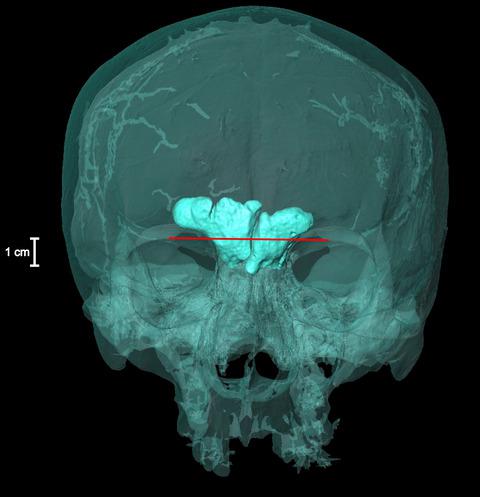Our official English website, www.x-mol.net, welcomes your
feedback! (Note: you will need to create a separate account there.)
骨骼遗骸中的生物学关系和额窦与已知家谱数据的相似性。
Journal of Anatomy ( IF 1.8 ) Pub Date : 2020-06-02 , DOI: 10.1111/joa.13246 Jan Cvrček 1, 2 , Rebeka Rmoutilová 2 , Markéta Čechová 2 , Tomáš Jor 3 , Jana Velemínská 2 , Jaroslav Brůžek 2 , Ondřej Naňka 4 , Petr Velemínský 1
Affiliation

|
额窦分析对于检测具有生物学相关性的个体具有潜在的用途。然而,其评估方法及其信息价值受到质疑。这项工作的目的是引入一种使用“眶外线”(ESOL)评估额窦的新方法,并确定额窦测量中家庭内部是否存在性别差异,以及额窦相似性是否反映了已知的遗传关系。测量和形态。我们检查了 41 名成年人的骨骼遗骸(25 名男性,16 名女性),他们都是一个家族四代人(19 世纪至 20 世纪)的成员,包括血缘关系非常密切的人。获取头骨的 CT 图像,并使用 ESOL 上方的部分分析额窦的尺寸和形态。根据额窦尺寸,家庭内部没有发现显着的性别差异。生物距离与额窦的最大高度和形态之间存在显着关系。在密切相关的个体中发现了最大程度的相似性。此外,在一些情况下,堂表兄弟姐妹或祖父母与其孙子之间的相似度高于兄弟姐妹或父母与其子女之间的相似度。总表面积、体积和宽度并不是相关性的重要指标。已知的遗传关系也得到个体形态特征的支持。血缘关系非常密切的家庭内的变异性低于血缘关系一般程度的家庭内的变异性,尽管差异仅在某些变量上显着。

"点击查看英文标题和摘要"





















































 京公网安备 11010802027423号
京公网安备 11010802027423号